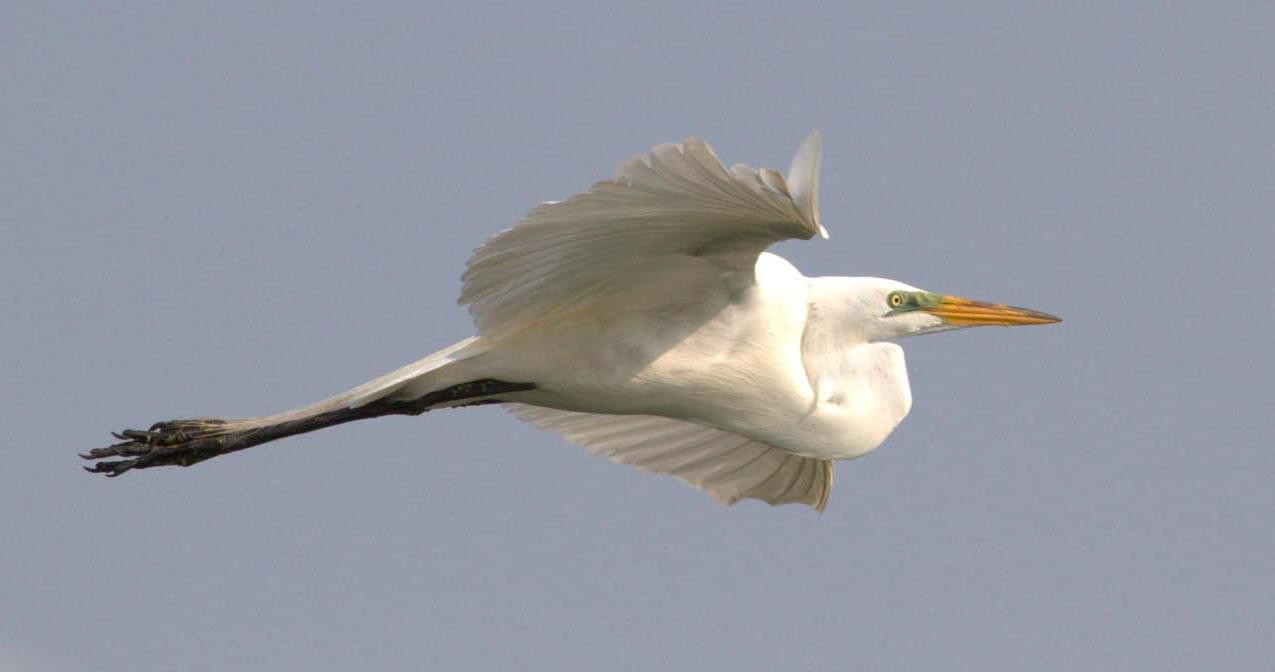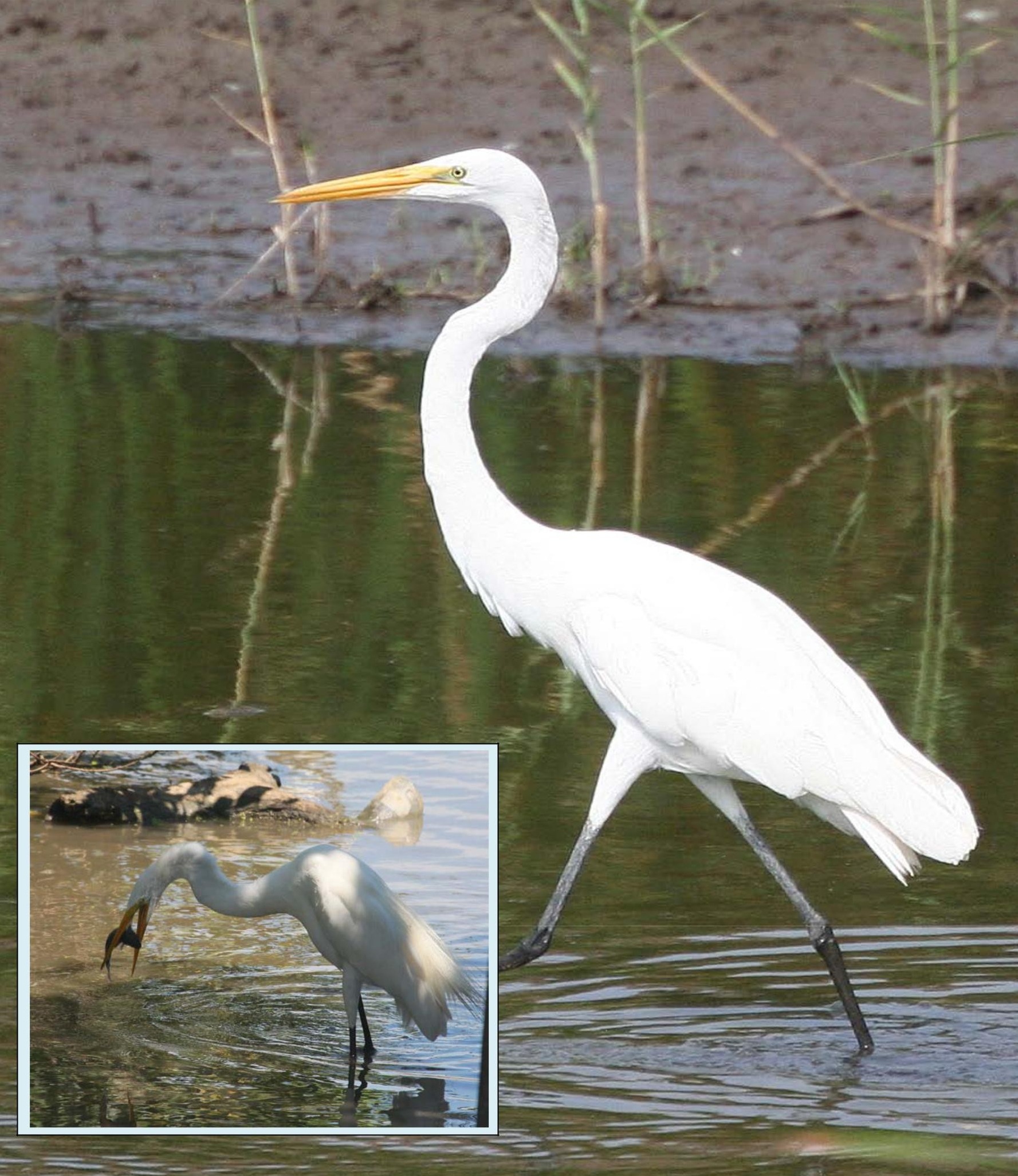By Howard Platt from the August 2010 Edition
 My birding guides advise me that size is very difficult to judge, especially at a distance, and is not a good measure by which to identify birds. They are right, of course, and they know a lot more than I do about birding. That said, if you see a really tall white bird, long neck and long legs, standing in the lagoon waiting for some unsuspecting fish to swim by, then you are watching a great egret. They are a member of the heron family and, with the exception of the occasional great blue heron that you may see, they are the largest wading bird on the pacific coast of Mexico. They have been called many other things over the past few hundred years, among the names are American egret, common egret, great white egret, and angel bird. I can see reasons for all of the names, and for the changes. The bird is found around the world, so “American” is too restrictive,. Hunting for feathers and plumes for ladies dresses and hats reduced the American population by 95%, so it became uncommon in America – delete “common egret”. The all-white version of the great blue heron is larger, so great white egret is inappropriate. Young egrets are aggressive towards one another in the nest, and stronger siblings often kill their weaker kin so that not all survive to fledge in two to three weeks. Hard to call them angel birds after that behavior!
My birding guides advise me that size is very difficult to judge, especially at a distance, and is not a good measure by which to identify birds. They are right, of course, and they know a lot more than I do about birding. That said, if you see a really tall white bird, long neck and long legs, standing in the lagoon waiting for some unsuspecting fish to swim by, then you are watching a great egret. They are a member of the heron family and, with the exception of the occasional great blue heron that you may see, they are the largest wading bird on the pacific coast of Mexico. They have been called many other things over the past few hundred years, among the names are American egret, common egret, great white egret, and angel bird. I can see reasons for all of the names, and for the changes. The bird is found around the world, so “American” is too restrictive,. Hunting for feathers and plumes for ladies dresses and hats reduced the American population by 95%, so it became uncommon in America – delete “common egret”. The all-white version of the great blue heron is larger, so great white egret is inappropriate. Young egrets are aggressive towards one another in the nest, and stronger siblings often kill their weaker kin so that not all survive to fledge in two to three weeks. Hard to call them angel birds after that behavior!
One of the oldest organizations formed to help protect the environment is the Audubon Society. Although Audubon himself killed thousands of birds in his attempt to identify and classify them, the society was formed to help protect birds from being killed for
their feathers. The great egret was adopted as a symbol of the society, and the partial recovery of the population is a mark of its success. Today, the threat is habitat loss, particularly because the bird nests in colonies which are vulnerable to the ravages of hurricanes or man -made causes.
You are likely to see great egrets in most of the coastal lagoon of Pacific Mexico, or even along streams, tidal flats, and occasionally an open field. They catch their prey by stalking along, very slowly, or more often by standing still for long periods, waiting for it to come within range.
The have an extremely flexible neck. They can wrap their head close to their bodies, as they do in flight, or strike out at a passing fish with lightning agility. Fish are number one on the menu, but great egrets also eat lizards, mice, or other small animals. So the bottom line is, if it is big white bird, it is probably a great egret,

Download the full edition or view it online




You must be logged in to post a comment.